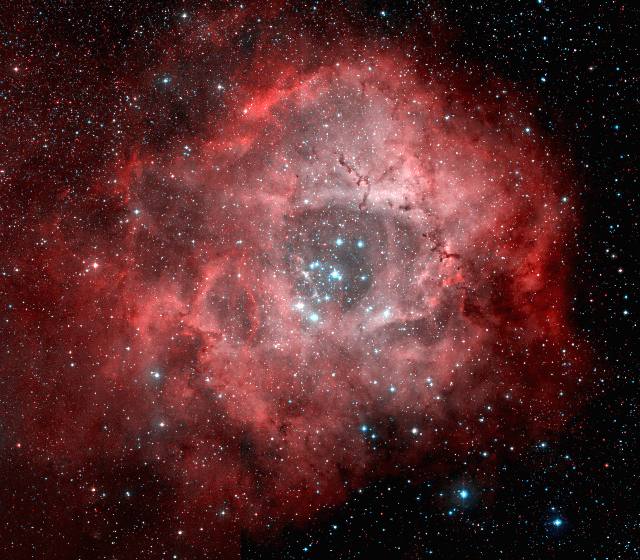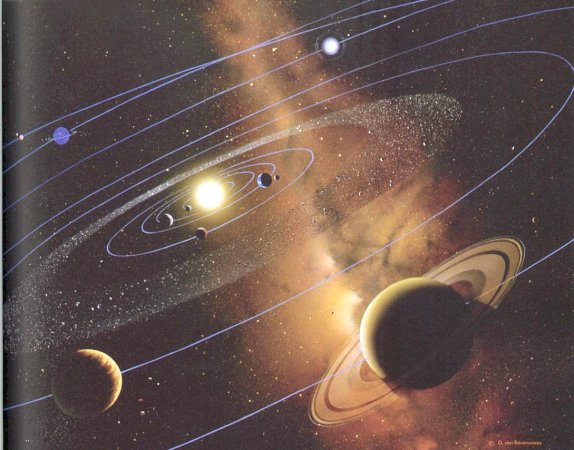The universe contains everything - that which are known as well as the things that are unknown to humankind. Celestial bodies like the planets, the moon, the stars are all part of the universe. The universe is vast, much larger than we can imagine. During the day, we see the sun, whereas at night we see the moon, stars and some planets ,comets, meteors etc. When we look into the sky, we actually look into the past - for light, being a radiation, has a finite definite speed (299,792,458 m/sec in vacuum if you are interested!). But even at such a high speed it takes time for the light rays to reach our eyes on this planet, after traversing vast expanse of space in between the stars and our planet.
The standard unit of length is metre. But while dealing with huge distances and vast expanse of spaces outside our solar system , metre becomes too small a scale for measurement. To handle the enormous distances involved, a more handy and practical unit of length is chosen. This is called a Light Year (symbol -ly).A light year is the distance travelled by light in one year.Grasp the enormity of this scale - 1 light year = 9.46 trillion kilometres. 1 trillion is obtained by adding 12 zeroes after putting 1 !!
Light always held fascination since the days of earliest forms of humans. Various attempts were made by people belonging to ancient civilizations to track the main source of light in their lives - the Sun , so much so that almost all ancient civilizations have given the status of God to the sun! Their beliefs may have gone with their existence but the earliest attempts and the means to track down the path of the celestial events and heavenly Gods still exits - only if you know where to look for it .
Almost 3500 years ago ( i.e going back to 1500 B.C ) the pharaohs of Egypt built a temple complex called the Karnak Hall to worship the God of all Gods -Amen Ra - the Sun God. The architecture of the temple was built in a way so that the sun rose from the different doors at different times of the year.
 |
| Temple of Amen Ra |
The worship reached its peak when the sun rises absolutely in a straight line alignment to the central passage-way, casting no shadow of its pillars in the path of the sun, enlightening the main temple. This happens once in a year (approximately around 21st of December).
 |
| Karnak Hall passage overcast by shadows of pillars during anytime of the year |
 |
| Sunrise at winter solstice in the main axis of the temple |
Just imagine the grandiose of purpose of making such a temple architecture.
Another such marvel exists at Chankillo - north western coast of Peru, S.America. About 2500 years ago a fortified temple, consisting of 13 towers, was built in a desert by a civilization of which nothing is known. Its walls were once brilliant white and were adorned with different figures and motifs.
 |
| 13 towers of the temple , Chankillo |
The 13 towers form an ancient solar calender. At different times of the year the sun rose in between the gaps of these towers and may be the people of the civilization gathered in the valley to welcome the Sun God and bow before the laws of nature. On 21st of December sun rises from the extreme right tower, and in June the sun rises from the extreme left of the leftmost tower.
 |
| Sunrise at June solstice |
The time taken by the sun to rise from a particular tower gave them the idea of measurement of the exact time of the year. All traces of such a cultured civilization is lost with time, but the true purpose of such a structure can be felt even today . It still serves as a calender as it did when it was first built and its stones were first laid down. What a magnificent achievement probably one of the earliest attempts to measure the heavens!
A desire to measure the sky, to predict the course of the path trodden by their God - laid down the foundation of modern astronomy. They understood the fact that it takes some definite span of time for the sun to rise from their familiar place which repeats itself after definite periods of time. These familiar timescales correctly measured the time of passage of their lives and it still can measure the age of modern man.




